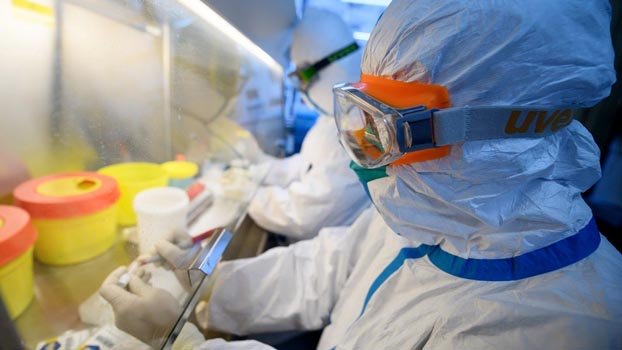Coronavirus outbreak
WHO urges caution as cases decline in China


Chinese health authorities have released an omnibus study of more than 70,000 confirmed or suspected coronavirus cases that suggests the epidemic was in decline by last week, but the scientific paper’s authors cautioned that infections could spike after people return to work following the extended Lunar New Year holiday.
The paper, published on Monday in a weekly volume by the China Centre for Disease Control and Prevention (CCDC), includes all the cases mandatorily recorded in the mainland’s Infectious Diseases Information System until February 11 – making it the broadest study yet of the disease now known as Covid-19.
The World Health Organisation’s director genmeral Tedros Adhanom Ghebreyesus on Monday said he remained cautious, despite the positive findings of the paper. “This trend must be interpreted very cautiously. Trends can change as new populations are affected,” Tedros told journalists during a daily briefing. “It’s too early to tell if this reported decline will continue. Every scenario is still on the table.”
Most of the more than 73,000 Covid-19 infections and 1,873 deaths recorded worldwide have occurred in China. The central Chinese province of Hubei and its capital, Wuhan, have borne the brunt of the epidemic.
Of the 72,324 patient records analysed in the CCDC study, 44,672 were confirmed Covid-19 cases based on laboratory tests, while 16,186 were suspected infections. A further 10,567 people – exclusively residents of Hubei – were categorised as “clinically diagnosed” cases as their infections were provisionally classified, without lab tests, by doctors using CAT scans of the patients’ lungs.
The study found that 81 per cent of all confirmed cases were mild, and put the overall fatality rate at 2.3 per cent. The data also showed that 74.7 per cent of confirmed cases occurred in Hubei. The paper’s 64 authors said the “major contribution” of their data-loaded study was that it allowed them to map out the curve of the outbreak’s spread for the first time. They described the disease’s spread on the mainland so far as having a “mixed outbreak pattern”.
In December, the data pointed towards a common source pattern of spread – meaning the people who were infected were likely exposed to the same infectious agent. This, however, changed from January to the study’s end date on February 11, where the data pointed towards a “propagated source pattern” that indicated human-to-human transmission.
The researchers said this mixed outbreak time trend was “consistent with the working theory that perhaps several zoonotic events occurred at Huanan Seafood Wholesale Market in Wuhan which allowed 2019-nCoV to be transmitted from a still-unknown animal to humans”. Later, “due to its high mutation and recombination rates, it adapted to become capable of and then increasingly efficient at human-to-human transmission,” they said.
“Although the epidemic appears to be in decline in the lead-up to February 11, 2020, we may yet face more challenges,” they said. “Huge numbers of people will soon be returning to work and school after the extended new year holiday. We need to prepare for a possible rebound of the Covid-19 epidemic in the coming weeks and months.”
Apart from the epidemic curve, the study also offered granular data on parameters such as the age groups and sex of those infected and killed by the virus. Of this, the starkest finding was the fatality rate for those aged above 80, which the study found to be 14.8 per cent. In the 70-79 age range, the fatality rate was 8.0 per cent.
Infections were almost evenly spread among men and women, with men making up 51.4 per cent of confirmed cases. The overall male fatality rate was higher, at 2.8 per cent compared to 1.7 per cent for women. Patients in Hubei had a fatality rate of 2.9 per cent, seven times the 0.4 per cent figure for the rest of mainland China. Across the mainland, half of the patients who reached a critical state died.
Of the deaths from confirmed cases that occurred during the study period, 979 fatalities – or 95.7 per cent of all deaths – occurred in Hubei. The data also showed 1,176 health care workers were infected by Covid-19, making up 3.8 per cent of total confirmed cases. Five health care workers have died from the disease.
The study also analysed whether those infected had recently been in Wuhan under a variable called “Wuhan-related exposure”. The researchers said the number of people studied under this variable was less than the total number of confirmed infections due to some missing data. Of 37,269 people who were analysed for this variable, 85.8 per cent were found to have links to the Hubei capital.


